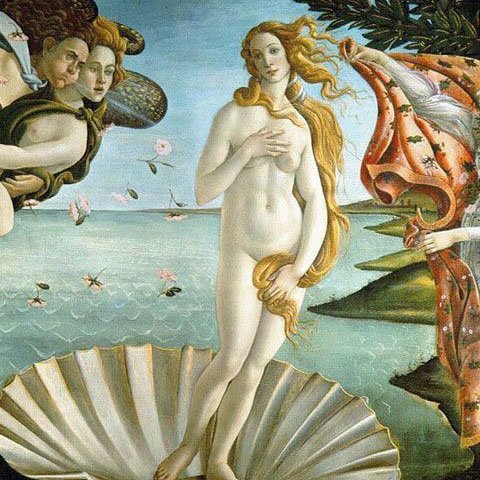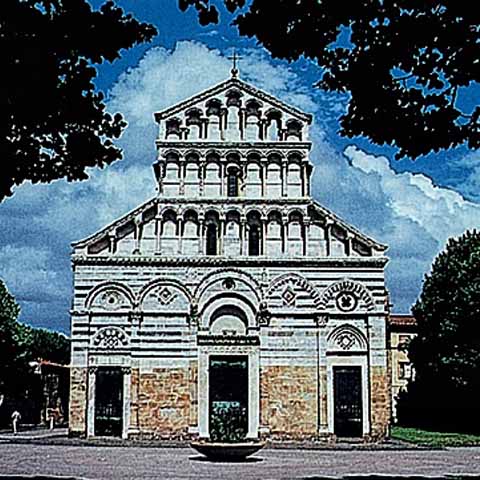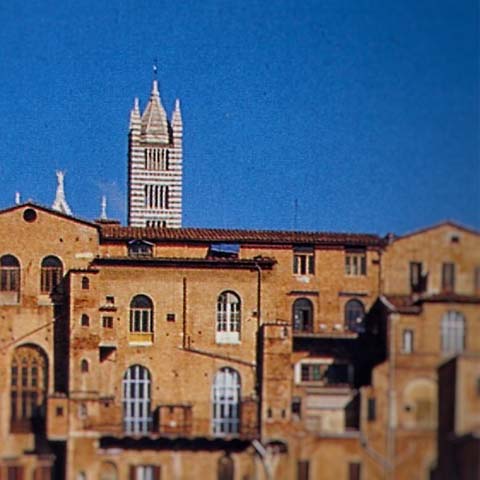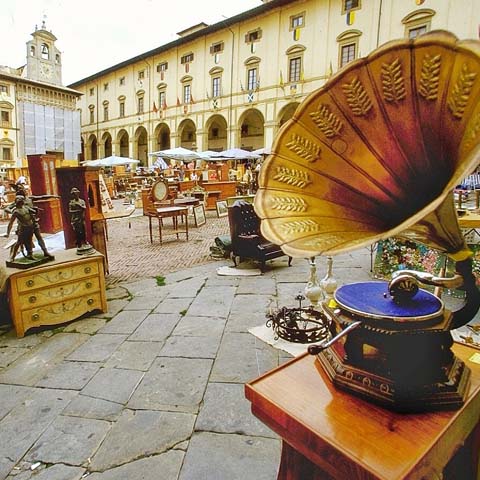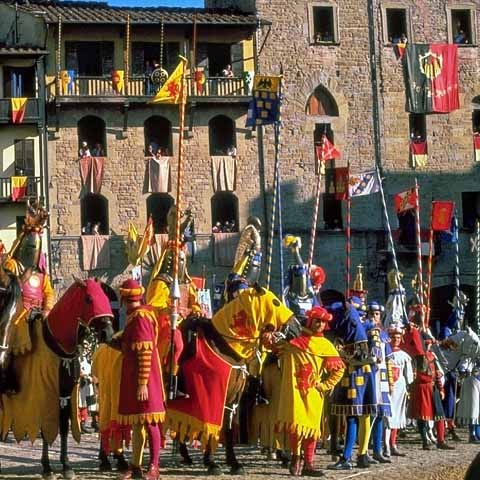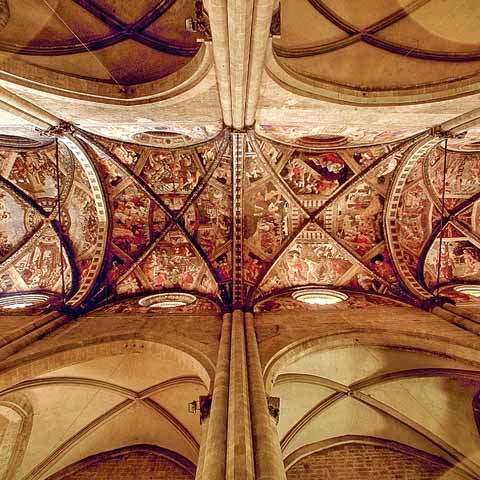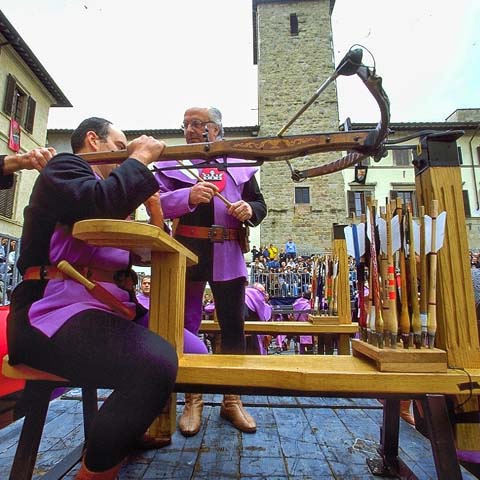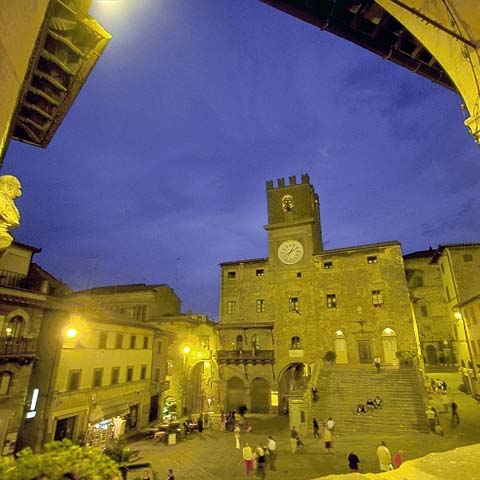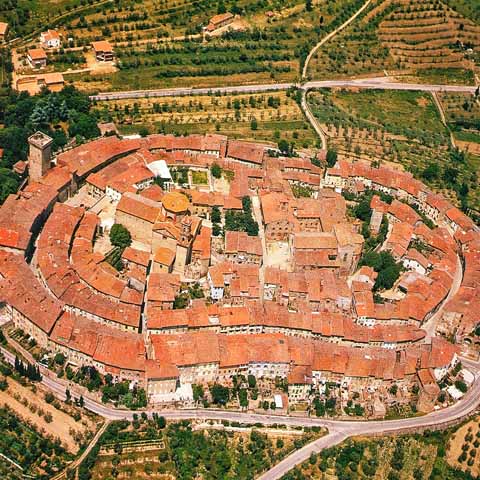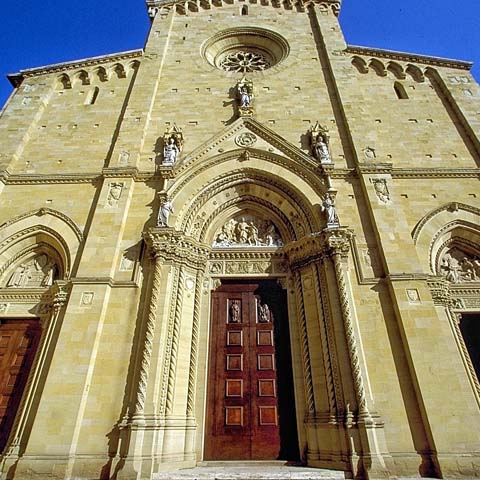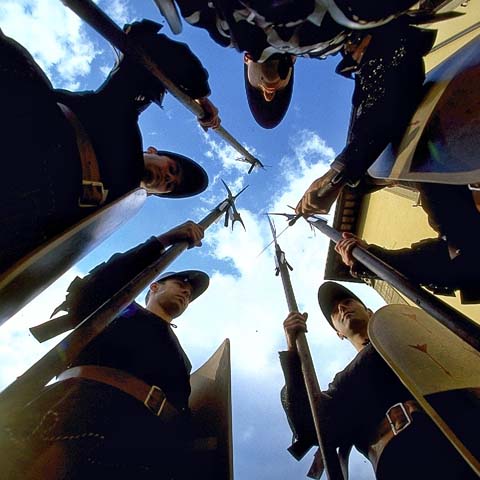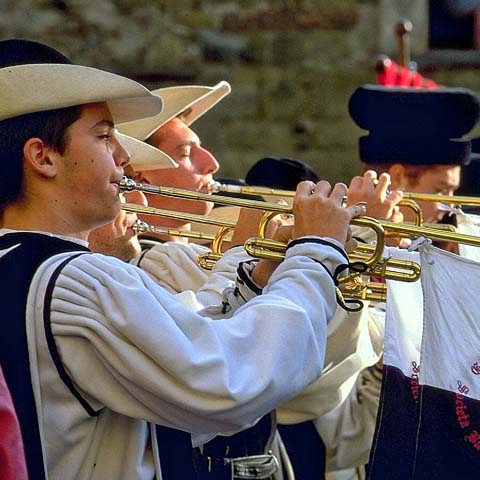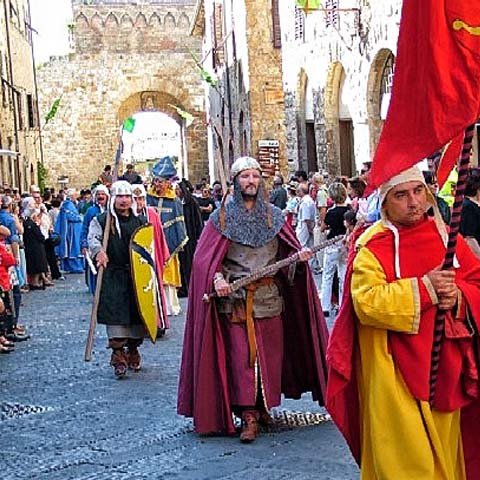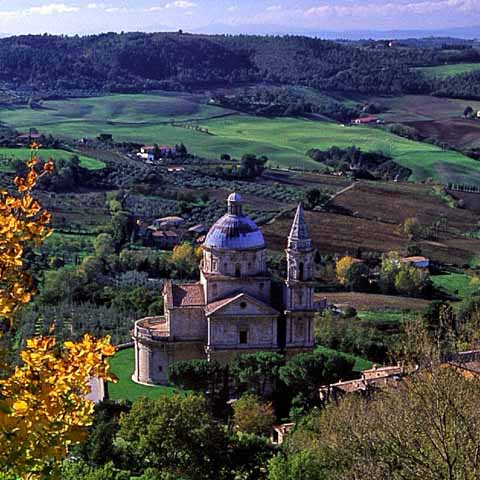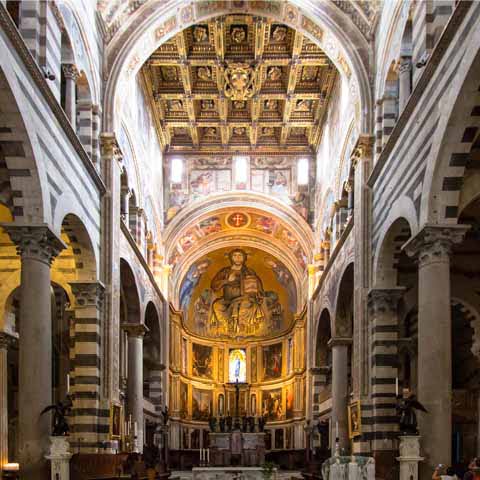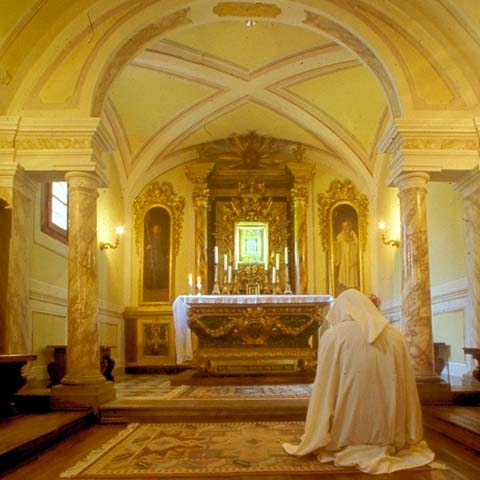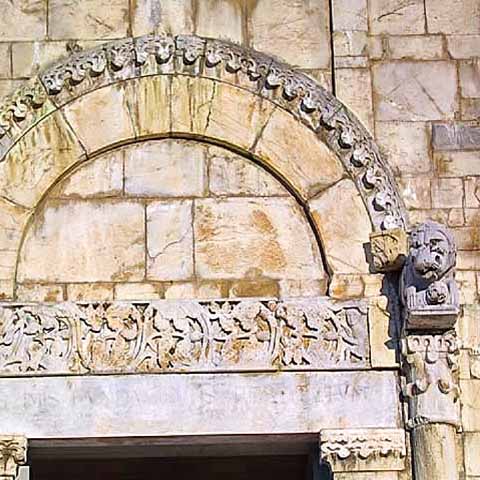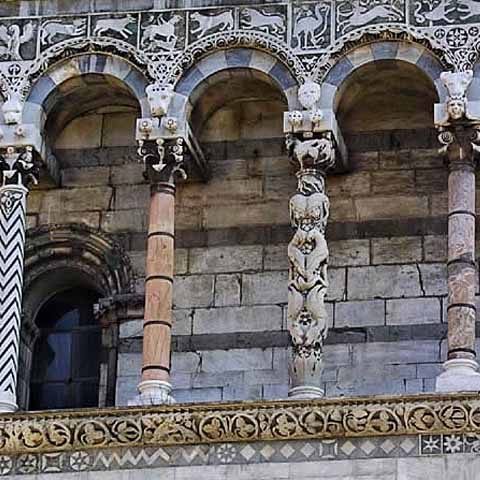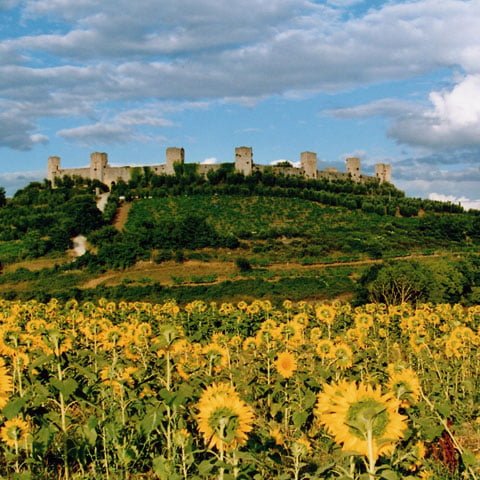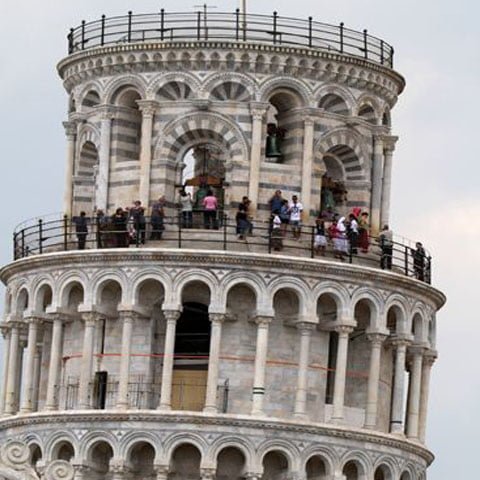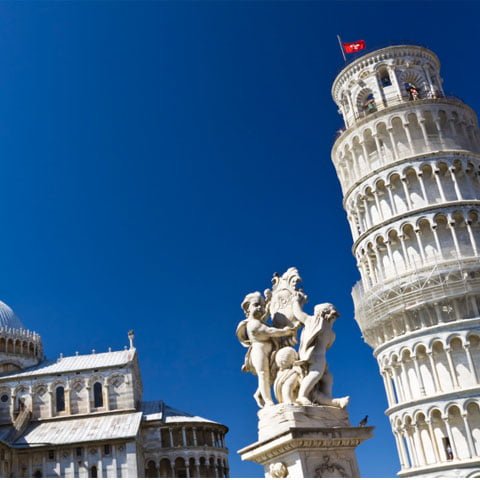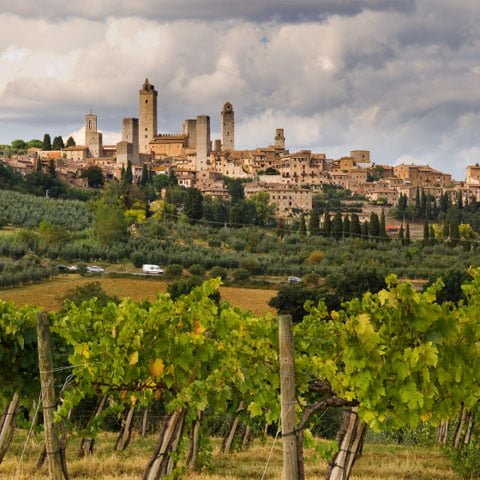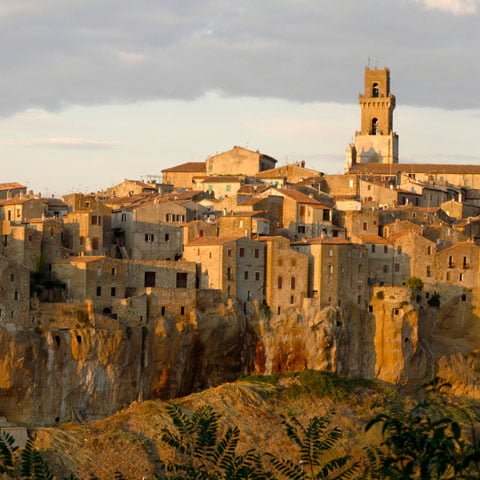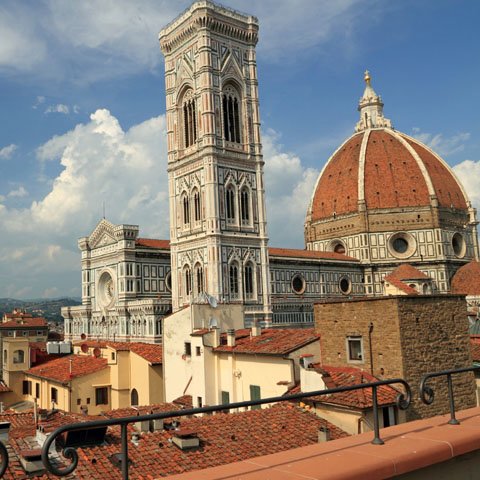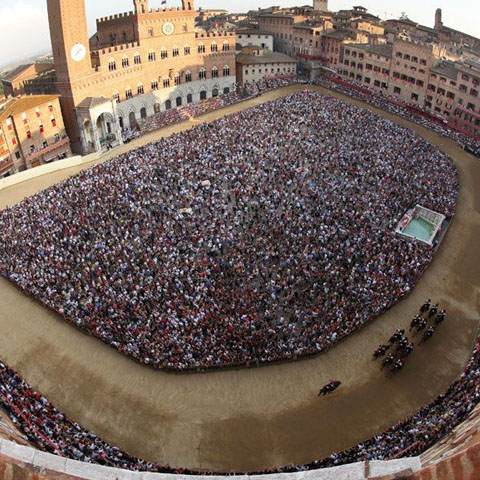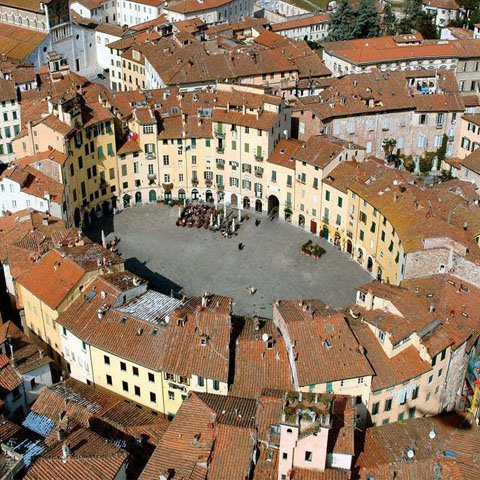Tuscany History
Delimited by the Tuscan-Emilian Apennines, the Ligurian Sea, and the Tyrrhenian Sea, Tuscany is an almost perfect triangle located slightly north from the center of Italy.
The region is characterized by a strong history, a rich culture and a complex territory that alternates mountains and hilltops with plains and fields in a succession of mesmerizing wavy shapes.
The name of the region derives from Etruria, called Tuscia in the local dialect and even if Tuscany is not exactly the center of Italy from a geographical point of view, it certainly is from a cultural and environmental perspective.
Tuscany’s ability to seamlessly, and somewhat magically, fuse the present and the past is mesmerizing. A walk through one of the region’s cities feels like a stroll through an ancient storybook, with architectural wonders that are still intact and almost perfectly preserved from centuries gone by. It’s easy to get a sense of what it might have been like to live in the days of the Middle Ages, Roman times, or Etruscan Ages. Captured in nearly every aspect of Tuscany’s culture is the value of the past and how it has shaped the region, the country, and the world.
Prehistory & History
Tuscany has always been seen as an attractive land by the various populations, and the region was inhabited since the Lower Paleolithic. Nevertheless, some of the most important archaeological findings from the prehistoric times date back to the Middle Paleolithic and are located in Mount Cetona and in the Apuan Alps.
Thanks to the richness of the territory, agriculture and farming became the main occupations of the locals during the Neolithic Age, and things are almost unchanged even today. In fact, Tuscany is famous all over the world for its exquisite traditional products, for its characteristic farms and intensive agriculture.
Together with farming and agriculture, Tuscany also developed strong cultural and economic bonds with the surrounding regions. These relations became well implemented during the Copper Age, and many findings dating from the Remedello and Rinaldone cultures stand as proof of the beginning of the commerce in the region. The most important archaeological findings of the era include bell-shaped vases belonging to the Beaker culture that were found in a series of dwellings discovered in the Sesto Fiorentino area.
During the Bronze Age in Tuscany began the Apennine civilization process, documented by some characteristic ceramic pots and vases decorated with meandering engravings that were found in the Mount Cetona area.
After a brief Proto-Villanovan phase, Tuscany entered into the Iron Age, a period characterized by the expansion of the splendid Etruscan civilization.
The Etruscan civilization expanded in Tuscany between the eighth and seventh centuries BC. The Etruscans flourished in the region until Tuscany was conquered by the Romans between the fourth and third centuries BC. Nevertheless, under the Roman protection, the region experienced a period of prosperity and economic development, especially in agriculture and maritime commerce.
Some of the most important settlements in the Roman Era were Arezzo, the industrial center for the production of ceramics, and Volterra, a military settlement which played an important defensive role against the nearby Ligurian tribes.
The Romans also established the cities of Florence, Siena, Lucca, and Pisa, and they introduced the sewers and aqueducts in the region and developed new and existing roads and buildings.
After the fall of the Roman Empire, the region passed under various rules and dominations until the sixth century, when it was conquered by the Lombard. Under the Lombard domination, Tuscany was transformed into a Duchy with the seat at Lucca, then, after their fall, the region became a march.
One of the most famous Marquises was Boniface II, and under his rule, Tuscany acquired many abbeys, monasteries, and castles, edifices that still impress tourists and locals alike.
In this period, the various settlements started to grow both economically and demographically and from mere towns or villages turned themselves into communes. Lucca was the first commune in Tuscany, and in Italy as a matter of fact, followed by Florence, Pisa, Arezzo, and Siena.
The engines of this economic growth were fueled by the pilgrims traveling along the Via Francigena, a spiritual route that brought both wealth and development to the area.
The region changed its seat in the late tenth century when Hugo the Great, Margrave of Tuscany, preferred Florence over Lucca. Nonetheless, Pisa claimed the title of the most important city of the region in the eleventh century when it developed a true colonial and trade empire in the Mediterranean. In the meantime, banking became a flourishing activity in the rest of the region, especially in the cities of Lucca, Florence, and Siena.
By the early fifteenth century, Florence gained a major role in Tuscany, becoming the cultural capital of the region. From now on, Tuscany’s history is often confused with that of the Florence of the Medici that strengthened its prestige under the rule of Lorenzo the Magnificent.
After the fall of the Florentine Republic in 1530, the Grand Duchy of Tuscany claimed its independence. The administrative and legislative regulations were shaped under the domination of Alessandro and Cosimo I, and these laws remained fundamentally unchanged until Tuscany was united to Italy in 1860.
Archeology in Tuscany
Some of the most important archeological findings in Tuscany belong to the Villanovan, a population that spread in Tuscany between the sixth and the eighth centuries BC. Many of their most important necropolises correspond to the subsequent centers of the Etruscan civilization.
Among these centers, Populonia is probably the most significant for both the Villanovans and Etruscans. In fact, the two necropolises of Populonia are linked to these civilizations and demonstrate the economic importance of the region in the ancient times.
Apart from Populonia, other interesting necropolises were found in other settlements, such as Vetulonia, Chiusi, and Volterra.
The tombs and mortuary chambers of these necropolises are very different between them; some are covered in bronze, others have characteristic painted chambers decorated with oriental materials and archaic stone sculptures, while in others were discovered sarcophagi and urns.
Some of the most characteristic funerary urns, made of alabaster, are located in Volterra and the habit of using them continued throughout the Roman Empire Era until the first century BC.
In Arezzo, on the other hand, were discovered two bronze statues of Chimera and Minerva together with other brass works of minor importance that are currently exhibited at the Archeological Museum of Florence.
The Roman legacy is visible almost everywhere throughout Tuscany, in the form of Roman amphitheaters, baths, temples, and villas, most of them built in the seaside areas.
Romanesque Art
The artistic growth of Tuscany began in the ninth century, with the development of the Romanesque architecture characterized by interesting local variations.
One of the most important Florentine architectural developments from the ninth century is the geometric shape of the baptisteries as we know them today, but the style was only consecrated in 1059. The geometric structure refers to an early Christian tradition, and the church of San Miniato al Monte in Florence is probably the most representative example of this architectural style.
The Lombard architecture of Lucca and Pisa contrast the Florentine tendencies with a fusion between the Romanesque and Lombard elements, with special attention being given to the coloristic and decorative details. The churches of Sant’Alessandro and San Frediano in Lucca and the famous complex of the Square of Miracles in Pisa are certainly beautiful examples of this influence.
In fact, the Romanesque-Lombard style became more popular than its Florentine counterpart, and it diffused itself in other Tuscan cities such as Pistoia and Arezzo.
Another important element of the Romanesque artistic heritage of Tuscany is the sculpture. The most important centers of this artwere Pisa, Lucca, and Pistoia, while the sculptural style of the era has dominant Lombard-Emilian influences.
Gothic Art
Tuscan Gothic art had its main center in Florence and Siena. Florence distinguished itself with a strict interpretation of the Gothic elements while Siena developed a type of Gothic art influenced by the Romanesque tradition.
Some of the most important Gothic monuments in Florence are the church of Santa Maria Novella, the Cathedral of Santa Maria del Fiore, and the church of Santa Croce in Florence, while in Siena we can mention the Dome and the Public Palace. Other remarkable Gothic monuments in Tuscany are found in the cities of Lucca, Pisa, and Volterra.
Beginning with the second half of the thirteenth century, an outstanding series of artists who defined the characteristics of Tuscan art developed in the region.
One of them is Nicola Pisano, who defined the classical forms of the Tuscan sculpture. His style was adopted and developed by Arnolfo di Cambio, who merged it with the new Gothic derivation of the French art while Giovanni Pisano elaborated a dramatic and synthetic style that subsequently influenced many other sculptors.
The painting, on the other hand, had a strong Byzantine influence, one of the most representative painters of the era, Cimabue, striking with its classical interpretation of the traditional style. A true revolution in painting was accomplished by Giotto, whose influences went well beyond the Byzantine and Gothic limits.
In contrast with Florence, Siena developed a different artistic character initiated by Duccio di Buoninsegna, who renewed the Byzantine tradition by dissolving the stereotyped patterns in more fluid lines able to exalt a chromatic refinement.
From this period we must also mention the alternative arts that include ornamental jewelry, embroidery, wooden sculptures, glassware and artworks developed especially in Pisa and Siena.
Renaissance
The sixteenth century marked the period of the greatest artistic splendor in Tuscany and especially in Florence, a city that became the symbol of the region. The Italian Renaissance spread throughout Europe thanks to artists such as Donatello, Brunelleschi, and Masaccio.
For the Florentine architecture, this period is probably the most important because the typical Florentine buildings were developed. Apart from Brunelleschi, throughout Tuscany other talented architects gave life to notable landmarks of the region.
Among these artists was Bernardo Rossellino who projected the Piccolomini palace in Siena, one of the most outstanding examples of the Renaissance architecture in Tuscany.
From the Renaissance, there are countless sculptural examples that could be mentioned. Probably the first great masters of the fifteenth century were Lorenzo Ghiberti in Florence and Jacopo Della Quercia in Siena. To a certain extent, both of them were influenced by the Gothic style; nevertheless, they draw the path for the following sculptors such as Donatello, who became famous for dramatic art.
Regarding the painting, Florence became the dominant center while Siena started to decline. Probably the most representative artist of the century is Botticelli, whose sophisticated expressions defined the Renaissance style, not only in Florence and Tuscany, but throughout Europe.
Two renowned masters of Tuscan art from the late fifteenth century, who influenced the tendencies and styles for many centuries thereafter, are Leonardo and Michelangelo.
In terms of popularity, Michelangelo can be considered the ruler of the Florentine and Tuscan art scene of the sixteenth century in the fields of architecture, sculpture, and painting, and the artist still has many followers who try to pursue his unmistakable style.
Although of minor importance, in 1546, the Medici established in Tuscany the first tapestry, while the characteristic Florentine mosaics and the Tuscan ceramics are other beautiful expressions of Tuscan art.
Baroque
Baroque architecture manifested itself more soberly in Tuscany than elsewhere, the region remaining linked to the classicism of the Renaissance. Eventually, Tuscany welcomed a few late novelties from the Baroque art through the works of Gherardo Silvani, who projected a number of palaces and churches in Florence.
Sculptures were also weakly affected by the Baroque influences, with most of them being implemented by Bernardo Buontalenti.
Following the tendencies of sculpture and architecture, paintings also remained greatly influenced by the Renaissance. Nevertheless, Pietro da Cortona made a difference with the two cycles of frescoes from Palazzo Pitti. Painted in two different moments, these frescoes introduced the Baroque style to the Florentine tradition.
Liberty Art
The specific Tuscan architecture almost disappeared in the nineteenth century; nevertheless, the period was prolific for sculptures and paintings.
Beginning with the twentieth century, Florence welcomed the characteristic liberty style, majorly thanks to the painter Galileo Chini whose ideas influenced the design of both public and private environments.
The liberty style didn’t influence only the painting, as the characteristic architecture was also welcomed in Florence and Tuscany. Impressing with the beautiful façades and with a peculiar morphology of the interior spaces, the liberty buildings conquered the hearts of the Tuscans. Some of the most representative examples are the Gran Caffè Margherita in Viareggio and the Broggi-Caraceni villa in Florence.
Culture in Tuscany
Along the centuries, Tuscany was one of the most important cultural centers of Italy, and the region wears with pride the signs of its history. In Tuscany, the culture is not just a form of legacy from the past but a persistent original heritage that is renewed and evolved.
In fact, the region is extremely alive from a cultural point of view and it is able to exploit its artistic and natural heritage without damaging it, but re-elaborating it in a creative way.
A confirmation of this impressive capacity of protecting the patrimony is the fact that UNESCO included in the cultural heritage of humanity five Tuscan sites, the historical center of Florence, the Square of the Dome in Pisa, and the historic centers of San Gimignano, Pienza, and Siena.
Tuscany is not only the cradle of the Renaissance; its cultural legacy goes beyond the artistic influences. The Italian language was born in Tuscany, spoken for the first time by the Florentine noblemen in the thirteenth century.
Furthermore, another peculiarity of the Tuscan culture is the landscape, considered a true symbol of the region. In fact, Tuscany is often associated with rows of cypress trees and characteristic farmhouses settled in an impeccable countryside.
Tuscan people are also proud of their literary tradition that counts important names such as Boccaccio, Pertarca, and Dante. Apart from them, Florence is considered a primary center of culture at international levels thanks to its many historical libraries, art institutes, and foreign institutions.
The theater is another traditional form of art in Tuscany, the most representative towns where the theater is kept alive being Montepulciano and Monticchiello, in the province of Siena.
Apart from this, throughout the year the region hosts numerous festivals, such as the Carnival of Viareggio and the Regatta of the Maritime Republics in Pisa.
Craftsmanship, another form of tradition, is also kept alive throughout Tuscany. The region is famous for its green glass, Carrara marble, wrought iron, and pottery.
Tuscan gastronomy has ancient origins and is characterized by genuine ingredients and simple yet exquisite recipes. There are many traditional dishes, each city and village having their local specialties. Nevertheless, probably the emblem of the region is Ribollita, a type of soup made with stale bread, black cabbage, and beans.
The appetizers are almost always accompanied by the characteristic Tuscan bread that is unsalted and exalts the flavors and aromas of the food. Among the main appetizers, we can mention finocchiona, a traditional sausage characterized by an intense flavor and that is made of pork meat and fennel seeds.
Buristo, on the other hand, is an almost unknown specialty originating from Florence and Siena. This type of sausage is made with pork meat aromatized with lemon zest, salt, pepper, parsley, and garlic.
The tradition of these flavorful sausages lays back in the ancient peasant habits. In fact, the poor families couldn’t afford wasting food, and for this reason, they used aromatic flavors to cover the taste and aroma of meat that had become rancid.
Apart from the sausages, Tuscany is famous for countless recipes that use stale bread and leftovers as main ingredients.
The characteristic pasta in Tuscany is Pappardelle, a type of long pasta similar to a ribbon, usually served with wild hare or boar ragù. Casentino dumplings, typically filled with spinach and ricotta, are another type of pasta usually served in the region.
When it comes to the main courses, the game dominates the recipes and one can choose from wild boar, wild hare, deer or other types of meat.
Without a doubt, a famous and popular main course with ancient origins is the Florentine steak, which is often accompanied by roasted potatoes or salads.
In the seaside areas, among the many types of fish and seafood, eels are extremely popular among the locals, usually accompanied by fresh or cooked vegetables and legumes such as asparagus, pumpkin flowers, artichokes, cabbage, beans, and peas. Some of these recipes date back to the Etruscan era.
Tuscany also has a long history and tradition in diary production, typically using sheep milk as the main ingredient. The characteristic type of cheese in the area is pecorino, the most appreciated being the Raviggiolo. Apart from pecorino, Maremma area is famous for dairy products made from buffalo milk.
When it comes to desserts, some of the most popular local specialties are made of chestnut flour, and apart from those we can mention zuccotto, panforte di Siena, and ricciarelli.
Lastly, Tuscany is famous for its wines, the region boasting a secular history in the production of the delicious beverage.
Tuscany’s vineyards are a symbol of the region and some of the world’s most prestigious wines are produced here. The selection is ample and varies from exquisite whites to aged reds, including a wide variety of DOC and DOCG wines, such as Brunello di Montalcino, Chianti, Montepulciano, Carmignano, Vernaccia di San Gimignano, and Pitigliano.
A fortified wine worth mentioning is Vin Santo, a liqueur obtained from raisins rather than grapes and that is usually paired with desserts. According to the tradition, Vin Santo can only be paired with Canttucci, a traditional type of biscuits, and tasting this pairing encapsulates everything beautiful and awe-inspiring in Tuscany.
Travel Guides

